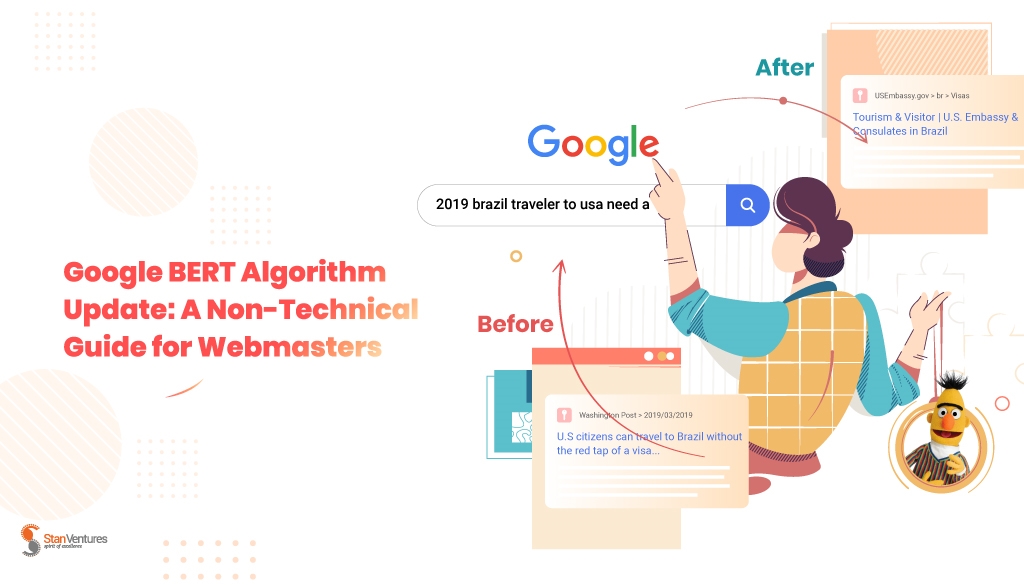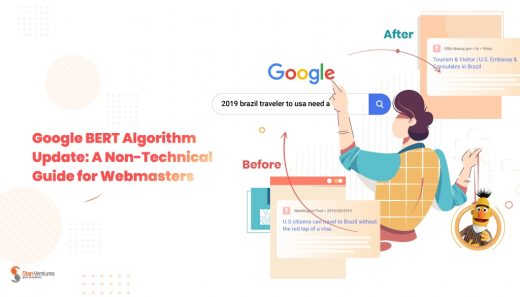BERT: A Look At Google’s Latest Algorithm Update
BERT: A Look At Google’s Latest Algorithm Update

We said hello to BERT (Google’s latest algorithm update) on at the end of October…and what a great update it is.
BERT who?
BERT (Bidirectional Encoder Representations from Transformers) is an update to Google’s Natural Language processing in search that follows on from RankBrain, which was announced by Google five years ago. It handles tasks such as entity recognition, part of speech tagging, and question-answering among other natural-language processes.
BERT is said to be able to better understand search queries through greater comprehension of the context behind a query so that users are provided with a more accurate and relevant SERP (search engine results page).
Before we examine how the BERT algorithm update will affect the SERP, it’s probably worth defining what natural-language processing is in the context of Google and search.
Google describes Natural Language Processing as follows: “Google Cloud Natural Language reveals the structure and meaning of text through powerful pre-trained machine learning models.”
Essentially, Natural Language Processing allows Google to process content somewhat in a way that is similar to what we do as humans.
Google has provided some examples of how BERT is already impacting the results we are getting through its better understanding of our search queries, particularly the context of the query and nuances included.
Here are some of the examples Google has provided for illustrative purposes:
These improved results come from BERT’s better understanding of longer and more conversational queries, such as those that include prepositions — e.g. to, from and other linking words that a computer typically would not recognize or understand.
Rather than simply keyword matching, which has been the previous level of understanding, BERT now recognizes the importance of prepositions and how they change the intent of the search. This greater understanding — as seen in the examples above — provides more relevant and contextual results.
It won’t only be the usual organic listings that will be impacted by BERT. Featured snippets will also be impacted, as BERT is said to be used in 1 in 10 searches. For featured snippets, I imagine that these will be much more accurate and that to gain a featured snippet you will need to more accurately answer the search query and be even more relevant to what the user is asking.
As always with updates, we won’t know the definitive impact for a while, so it will be important to keep a watching brief in terms of how the SERP evolves, particularly with featured snippets.
What does that mean for you?
As a user of Google, it should mean that you will have better search results and that you will be served with a SERP that is much more relevant. The great thing about this is that you should be able to find what you are looking for much more easily, as Google should have a better understanding of what you are actually asking.
Looking at this from an SEO and PR perspective, what does this mean for marketers?
Well, although Google says you you can’t optimize for this update, the fact is that if you were relying just on keyword research tools before, things have become a lot more difficult.
With Google understanding its customers better, it’s vital that you understand your customers better. Where do they go when they aren’t on your site? What content do they read, what videos do they watch? And how relevant are your pages for these more conversational queries?
It’s always recommended to take a human-first approach to optimization, meaning that you should create quality content that is relevant and will answer the question that your audience will be asking rather than focusing too much on the search engine.
With BERT, it’s now important that you understand how a machine interprets your content by using NLU.
This means you need to get data from other sources and look beyond the simple keyword tool and keyword volume. Review all your data to build a picture of what your customers are reading and watching online — your display activity is a great source here. Add your paid-search data on top of that to gain a full picture of customers.
Then set a strategy to work out where you can add value to a customer’s journey.
BERT will undoubtedly improve the quality of the SERP. It is up to you to ensure you are providing users with the best results for them and your business.
(65)


